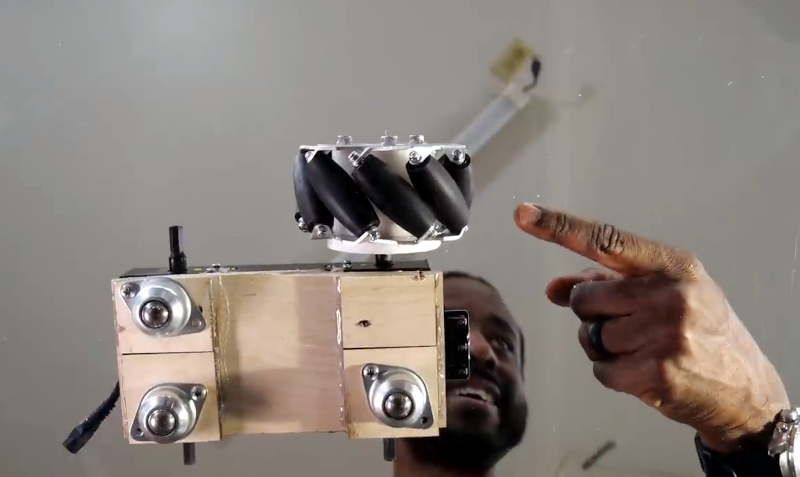If you make anything that moves, like a robot, you quickly realize that turning can be a pain. That’s why there are a number of designs for wheels that can go in different directions. One of the most common is the Mecanum wheel. [Jeremy] explains how they work by filming them from below on a transparent table. You can see the enlightening video below.
If you haven’t done anything with omni wheels before, it is disconcerting to see wheels rotating one way causing the vehicle to move at a right angle to the rotation. But this is very useful when you build robots or — as he shows at the start of the video — a forklift.
Mecanum wheels are similar to omni wheels, but with some differences. In particular, omni wheels have rollers at a 90-degree angle so they drag in the “wrong” direction. The Mecanum rollers are at 45-degree angle. That might seem like a small difference, but it means that all rotation translates and requires some vector math, as the video points out.
Many years ago, we were surprised to learn you could build strange wheels from wood. We like using omni wheels in a three-wheel configuration often called a Kiwi drive.
















I’ve always found these wheels fascinating but nobody ever seems to talk about their wear and tear. Is there more wear than normal wheels or is the wear in a different pattern? Inquiring minds want to know.
The wear and tear on a mecanum wheel rollers is actually revealed in the vector math. Because the roller is at a 45d angle to the axis of wheel rotation, friction against the surface being crossed becomes evident. This friction also describes the efficiency of the wheels, and why the rollers also need to rotate.
I’d think that a bigger issue than wear is performance.
Even if you had a nice flat surface (which most of the world is not) any “large enough to be useful” accelerations overload the system catastrophically.
Wear is one thing but stringy things tend to get wound around those little axles. Castors on chairs are a good example. This would be worse than tank steering sit on mowers now the rage if used on turf. One normally thinks of black rubber marks on concrete with drag racing not a sit on lawn mower.
Best suited to smooth floored clean container warehouses.
It’s mecanum, not mechanum! The name comes from the Swedish company where it was invented, Mecanum AB.